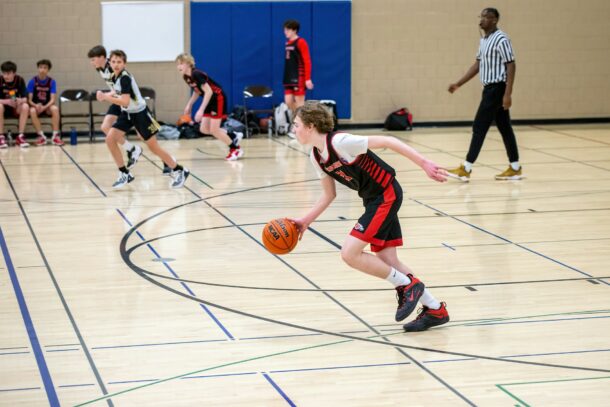In the dynamic world of youth basketball, defensive strategies play a pivotal role in determining the outcome of games. One such strategy that has gained significant attention and recognition is the “Pack Line Defense.” This defensive approach has revolutionized the way teams thwart opponents’ attacks and create opportunities for success on the court.
In this series of articles, we will take an in-depth look at the Pack Line Defense – its principles, tactics, and the reasoning behind its effectiveness. Whether you’re a seasoned coach aiming to refine your defensive playbook or a newcomer eager to grasp the nuances of basketball strategies, our exploration of the Pack Line Defense will equip you with valuable insights to enhance your coaching prowess. Let’s embark on this journey to unravel the layers of this strategic gem and understand how it can transform your team’s defensive game.
What is The Pack Line Defense?
The Pack Line Defense stands as a distinctive half-court strategy in basketball that centers on limiting dribble penetration into the key area. Unlike the conventional man-to-man defense approach, which hinges on a lone defender pressuring the ball handler, with additional defenders safeguarding passing avenues to the wings, the pack line defense diverges significantly.
Within the pack line system, all designated “help defenders” maintain their positioning along an imaginary line situated roughly sixteen feet away from the hoop. This demarcation corresponds to the curvature of the three-point line. By establishing this defensive perimeter stretching from the free-throw line to the baseline, this cohesive defensive formation coerces point guards or other offensive players into settling for jump shots instead of exploiting open layup opportunities.
In effect, the pack line defense prioritizes containment and obstruction, utilizing a collective defensive stance that discourages easy access to the key area. This strategy seeks to disrupt offensive flow, hinder dribble penetration, and ultimately prompt opponents into less efficient shot selections, thereby bolstering the defensive team’s overall effectiveness on the court.
3 Basic Principles of the Pack Line Defense
Here’s a look at three fundamental principles of the Pack Line Defense.
1. Deny the Post Player
In the realm of post defense, thwarting offensive players who position themselves in the low post at the bottom block of the key is crucial. The defender must prevent incoming passes from the wing to the post player. To successfully front the post player, the defender shifts their position slightly between the post player and the ball handler.
Employing high hands and maintaining a solid base helps retain this position, but it’s essential not to overcommit. Overcommitting could lead to an open path to the hoop through a well-placed lob pass. In cases of mismatches, effective communication with high-side or weak-side defenders can facilitate double-teaming when the assigned player receives the ball inside.
2. Balancing On-Ball and Off-Ball Pressure
The defender marking the player with the ball must execute tight and assertive defensive techniques. However, it’s vital to avoid excessive aggression and reaching for steals, which could result in fouls or the dribbler bypassing the defender. Should the on-ball defender be beaten, a cascading rotation of assignments within the team defense ensues until the on-ball defender regains position.
Off-ball defenders maintain their positions close to the pack line until their designated assignments receive the ball. Once possession is gained, an off-ball defender abandons the pack line and enforces pressure defense with a controlled and rapid closeout.
3. Preventing Transition Plays
While the Pack Line Defense excels against deliberate half-court offenses, it might prove less effective against fast-paced transition offenses. Counteracting this, the point guard and at least one wing player should position themselves near the top of the key. Meanwhile, two to three teammates crash the boards for offensive rebounds.
Swiftly transitioning from an offensive role to the first line of defense, these players curb the fast break. Executing a pack line transition defense necessitates a strategic retreat. Defenders sprint to regroup in the pack line formation before addressing their individual assignments once again.
Related: 3 Preseason Basketball Conditioning Drills
Resources:
If you found this useful, don’t forget to check out additional blog posts at TeachHoops.com. Also, check out TeachHoops on Facebook, Twitter, Instagram and YouTube.








